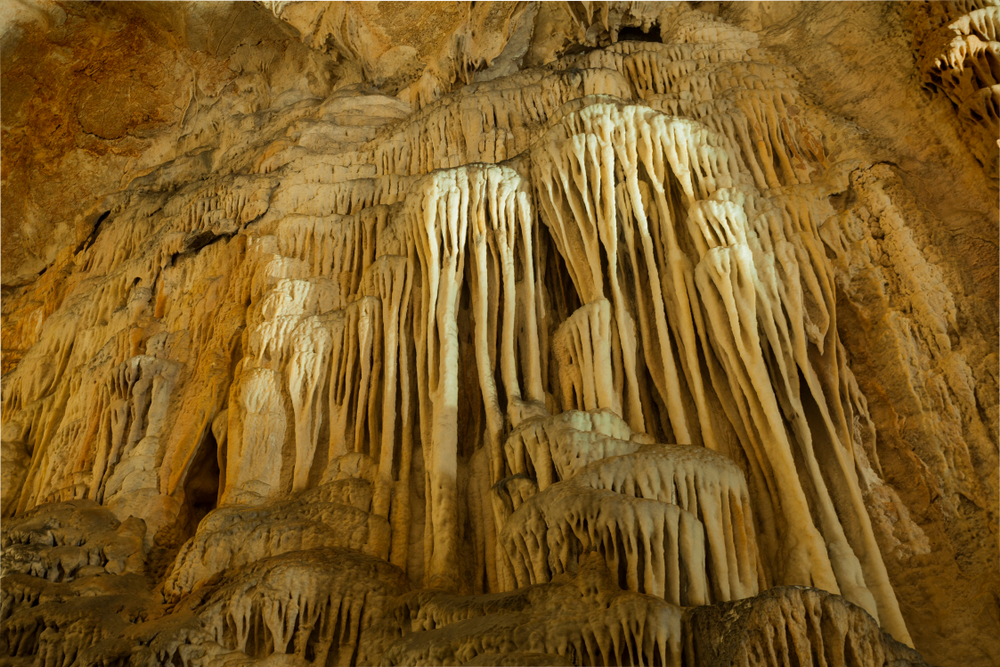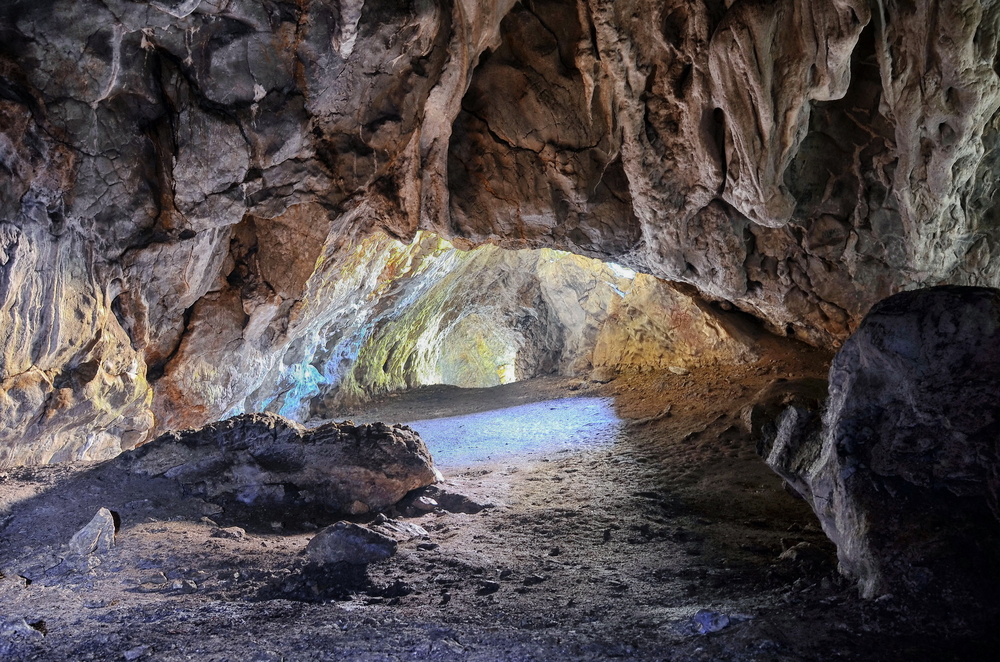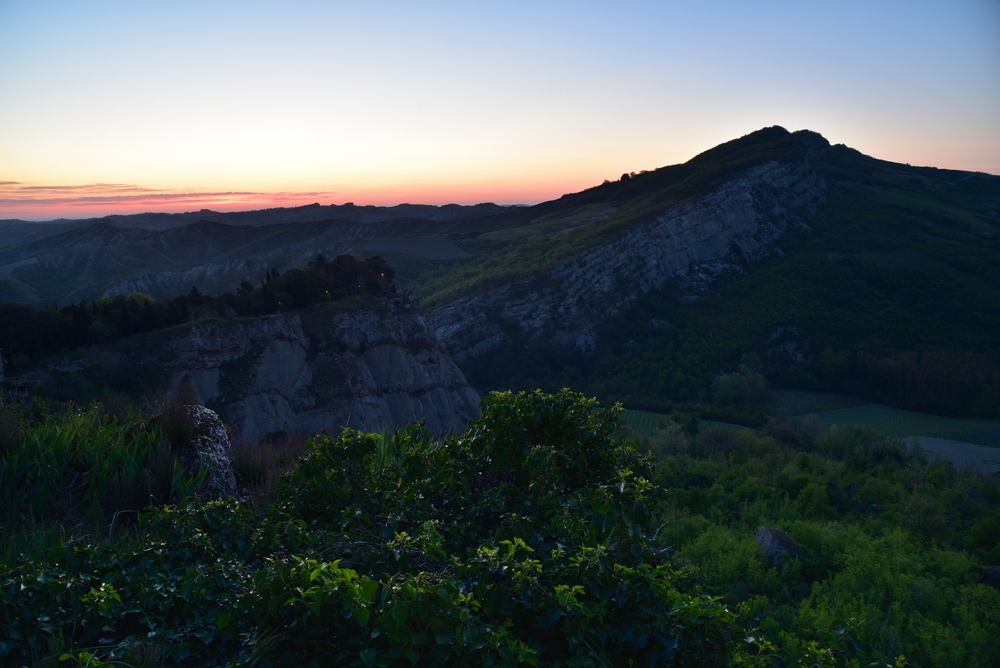Adriaticaves, protecting the caves between Italy and the Balkans
The Adriaticaves project, part of the Interreg Adrion cooperation programme, aims to promote sustainable management of the immense speleological heritage scattered on both shores of the Adriatic, with particular attention to tourism with low environmental impact and disadvantaged territories

Adriaticaves-protecting-the-caves-between-Italy-and-the-Balkans
A detail of the Cerovacke caves, in the Velebit massif, Croatia - © goran_safarek/Shutterstock
Caves, sinkholes, and karst landscapes are a constant in the inland areas of all the countries bordering the Adriatic, from Puglia to Albania, obviously including the region that gives the phenomenon its name, the Karst, and almost all of the Dinaric Alps. Yet, while a handful of caves alone are tourist attractions of international reach, most of the others are still little known.
The Adriaticaves project, which involves Italy and five Balkan countries (Croatia, Bosnia and Herzegovina, Serbia, Montenegro, and Albania), aims to share good practices to protect an immense heritage – environmental, archaeological, cultural – vulnerable to the effects of climate change, pollution, and also the mismanagement of tourism.
Combining development and conservation
Adriaticaves is based on two distinct objectives: on the one hand to promote the sustainable use of the speleological heritage in the so-called tourist caves, and on the other hand to increase the effectiveness of the conservation of those not open to the public. Seven partners involved: in Italy the Majella National Park (project leader) and the Management Body for Parks and Biodiversity of Romagna, in Croatia the Velebit Natural Park, in Montenegro the company Grotta di Lipa, in Serbia the municipality of Cacak and in Albania the Regional Council of Shkoder.
The project – part of the Interreg Adrion 2014-2020 European cohesion programme – was followed by a second phase, Adriaticaves Plus, consisting of a pilot action in an Abruzzo cave and completed in the summer of this year.
The overall value of the project was just under 1,500,000 Euros, largely financed by the European Union through the Regional Development Fund for member countries and IPA funds for pre-accession partners.
The partners produced two fundamental documents: an International Action Plan for the protection of caves and the Charter of Caves , a document for the sustainable management of caves open to the public. If the first was designed to ensure the conservation of natural cavities not open to the public and to ensure that tourist activities comply with European legislation that protects underground environments (Habitats Directive), the Charter of the Caves is aimed at all the actors who operate in tourist caves, including those not strictly involved in the project.
The speleology associations, the municipalities, and the signatory park bodies have thus committed to sharing common guidelines on all stages of the tourist use of a cave, including the criteria for choosing which ones are suitable for being made open, studies and monitoring to be undertaken before and during the opening to the public, the management of flows, the choice of usable materials, and so on.
A book in four languages available online was also produced, "The Book of Caves of the Adriatic and Ionian Areas", which illustrates seventeen caves of the project partners plus another twenty others managed by organisations that have signed the charter and pledged to manage their own caves according to the standards adopted by the project.
"The archipelago of the minor caves"
If the number of caves surrounding the Adriatic includes some of the most famous caves in the world (including Postojna, the most famous and most visited of all) and a handful of other sites that attract thousands of tourists every year, very often the karst areas are found in disadvantaged and depopulated areas. One of the objectives of the project was therefore to focus on "minor" and sustainable speleological tourism through the creation of a single quality brand "Adriaticaves" and the promotion of tourism offers with a low environmental impact, including the training of expert speleological guides as well as a network to circulate information and good practices among the speleoguides.
The result is an actual "itinerary of the caves" which, like a horseshoe, surrounds the Adriatic. From the Majella mountains (where another one equipped during the project is added to the Cavallone cave, which can already be visited), one gets to the caves of the Vena del Gesso Romagnola. Once on the other side, the itinerary passes through the Velebit massif, the largest protected area in Croatia, and then in Bosnia with Bijambare, not far from Sarajevo, and Vjetrinca, the "wind cave", in Herzegovina. In Montenegro it is possible to visit the Lipa cave, which has already been open to the public for some years. In Serbia the route contemplates Kadjenica, the "smoke cave", in which an altar commemorates the tragic killing by the Turks of Serbian rebels who had taken refuge there in 1815, while in Albania the Kaurri Cave, site of a ancient monastic settlement and can be reached by boat from Lake Koman.
Not all caves potentially of tourist interest can be made accessible, some because they are difficult to access and others because they are too vulnerable to the impact of visitors. Or, as happened in the project phase, due to the Covid-19 pandemic. For this reason, phase two of the project, Adriaticaves Plus, focused on the evaluation of how digital innovation can integrate the tourist experience, through a pilot action in the Grotta Nera, in Abruzzo, virtually reconstructed in detail and now accessible online.
A fragile shared heritage
Underground environments are an ecosystem almost isolated from the outside world as well as an almost inexhaustible source of archaeological and paleontological finds and information on the environmental changes on our planet.
"Precisely because of their isolation, however, caves are particularly fragile environments and sensitive to any artificial disturbance, and therefore it is of primary importance to protect them and raise awareness among the people who frequent them", explains Luciano Di Martino, director of the Majella National Park, leading body of the project.
"Our mountains have a lot in common with those on the other side of the Adriatic, not only from a cultural point of view, but from a naturalistic geological point of view", continues Di Martino. "They experienced the same climatic events, in particular the glaciations, which led to a transfer of biological organisms on both shores, with flora peculiarities found only in this region. An Interreg project like this is a way to investigate and better manage these rare and important environments, among other things for the water resource, a precious resource in karst environments, which is an asset we cannot do without. Learning more and understanding how to best manage these caves is value added for all the countries involved".
This content is published in the context of the “Work4Future” project co-financed by the European Union (EU). The EU is in no way responsible for the information or views expressed within the framework of the project. The responsibility for the contents lies solely with OBC Transeuropa. Go to the “Work4Future“
Tag: Work for Future
Featured articles
- Take part in the survey
Adriaticaves, protecting the caves between Italy and the Balkans
The Adriaticaves project, part of the Interreg Adrion cooperation programme, aims to promote sustainable management of the immense speleological heritage scattered on both shores of the Adriatic, with particular attention to tourism with low environmental impact and disadvantaged territories

Adriaticaves-protecting-the-caves-between-Italy-and-the-Balkans
A detail of the Cerovacke caves, in the Velebit massif, Croatia - © goran_safarek/Shutterstock
Caves, sinkholes, and karst landscapes are a constant in the inland areas of all the countries bordering the Adriatic, from Puglia to Albania, obviously including the region that gives the phenomenon its name, the Karst, and almost all of the Dinaric Alps. Yet, while a handful of caves alone are tourist attractions of international reach, most of the others are still little known.
The Adriaticaves project, which involves Italy and five Balkan countries (Croatia, Bosnia and Herzegovina, Serbia, Montenegro, and Albania), aims to share good practices to protect an immense heritage – environmental, archaeological, cultural – vulnerable to the effects of climate change, pollution, and also the mismanagement of tourism.
Combining development and conservation
Adriaticaves is based on two distinct objectives: on the one hand to promote the sustainable use of the speleological heritage in the so-called tourist caves, and on the other hand to increase the effectiveness of the conservation of those not open to the public. Seven partners involved: in Italy the Majella National Park (project leader) and the Management Body for Parks and Biodiversity of Romagna, in Croatia the Velebit Natural Park, in Montenegro the company Grotta di Lipa, in Serbia the municipality of Cacak and in Albania the Regional Council of Shkoder.
The project – part of the Interreg Adrion 2014-2020 European cohesion programme – was followed by a second phase, Adriaticaves Plus, consisting of a pilot action in an Abruzzo cave and completed in the summer of this year.
The overall value of the project was just under 1,500,000 Euros, largely financed by the European Union through the Regional Development Fund for member countries and IPA funds for pre-accession partners.
The partners produced two fundamental documents: an International Action Plan for the protection of caves and the Charter of Caves , a document for the sustainable management of caves open to the public. If the first was designed to ensure the conservation of natural cavities not open to the public and to ensure that tourist activities comply with European legislation that protects underground environments (Habitats Directive), the Charter of the Caves is aimed at all the actors who operate in tourist caves, including those not strictly involved in the project.
The speleology associations, the municipalities, and the signatory park bodies have thus committed to sharing common guidelines on all stages of the tourist use of a cave, including the criteria for choosing which ones are suitable for being made open, studies and monitoring to be undertaken before and during the opening to the public, the management of flows, the choice of usable materials, and so on.
A book in four languages available online was also produced, "The Book of Caves of the Adriatic and Ionian Areas", which illustrates seventeen caves of the project partners plus another twenty others managed by organisations that have signed the charter and pledged to manage their own caves according to the standards adopted by the project.
"The archipelago of the minor caves"
If the number of caves surrounding the Adriatic includes some of the most famous caves in the world (including Postojna, the most famous and most visited of all) and a handful of other sites that attract thousands of tourists every year, very often the karst areas are found in disadvantaged and depopulated areas. One of the objectives of the project was therefore to focus on "minor" and sustainable speleological tourism through the creation of a single quality brand "Adriaticaves" and the promotion of tourism offers with a low environmental impact, including the training of expert speleological guides as well as a network to circulate information and good practices among the speleoguides.
The result is an actual "itinerary of the caves" which, like a horseshoe, surrounds the Adriatic. From the Majella mountains (where another one equipped during the project is added to the Cavallone cave, which can already be visited), one gets to the caves of the Vena del Gesso Romagnola. Once on the other side, the itinerary passes through the Velebit massif, the largest protected area in Croatia, and then in Bosnia with Bijambare, not far from Sarajevo, and Vjetrinca, the "wind cave", in Herzegovina. In Montenegro it is possible to visit the Lipa cave, which has already been open to the public for some years. In Serbia the route contemplates Kadjenica, the "smoke cave", in which an altar commemorates the tragic killing by the Turks of Serbian rebels who had taken refuge there in 1815, while in Albania the Kaurri Cave, site of a ancient monastic settlement and can be reached by boat from Lake Koman.
Not all caves potentially of tourist interest can be made accessible, some because they are difficult to access and others because they are too vulnerable to the impact of visitors. Or, as happened in the project phase, due to the Covid-19 pandemic. For this reason, phase two of the project, Adriaticaves Plus, focused on the evaluation of how digital innovation can integrate the tourist experience, through a pilot action in the Grotta Nera, in Abruzzo, virtually reconstructed in detail and now accessible online.
A fragile shared heritage
Underground environments are an ecosystem almost isolated from the outside world as well as an almost inexhaustible source of archaeological and paleontological finds and information on the environmental changes on our planet.
"Precisely because of their isolation, however, caves are particularly fragile environments and sensitive to any artificial disturbance, and therefore it is of primary importance to protect them and raise awareness among the people who frequent them", explains Luciano Di Martino, director of the Majella National Park, leading body of the project.
"Our mountains have a lot in common with those on the other side of the Adriatic, not only from a cultural point of view, but from a naturalistic geological point of view", continues Di Martino. "They experienced the same climatic events, in particular the glaciations, which led to a transfer of biological organisms on both shores, with flora peculiarities found only in this region. An Interreg project like this is a way to investigate and better manage these rare and important environments, among other things for the water resource, a precious resource in karst environments, which is an asset we cannot do without. Learning more and understanding how to best manage these caves is value added for all the countries involved".
This content is published in the context of the “Work4Future” project co-financed by the European Union (EU). The EU is in no way responsible for the information or views expressed within the framework of the project. The responsibility for the contents lies solely with OBC Transeuropa. Go to the “Work4Future“
Tag: Work for Future












